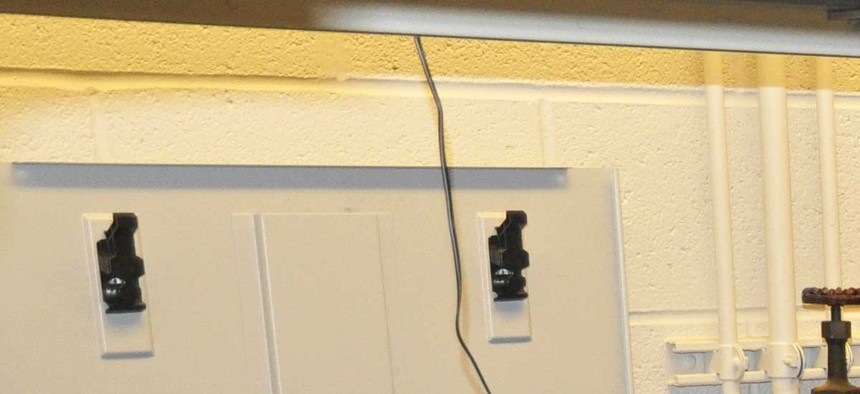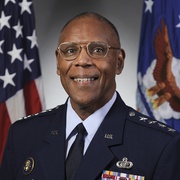
A graduate student performs sensitive measurement of interfacial thermal transport using an ultrafast laser system. Abhishek Yadav via U.S. Air Force
Air Force: We Must Invent the Future
To keep its technological edge, the vice chief says, the service must invest in femtosecond data transfer, Mach-8 aircraft, and more.
During his remarks at a U.S. Air Force Academy commencement in June 1963, President John F. Kennedy said, “For some of you will travel where no man has ever traveled before. Some of you will fly the fastest planes that have ever been built, reach the highest altitudes that man has ever gone to, and lift the heaviest payloads of any aviator in history. Some of you will hold in your hands the most awesome destructive power which any nation or any man has conceived.”
Who knew back in 1963 just how quickly the president’s words would ring true. Since the inception of the Air Force, it has been vitally important that we recruit, retain and develop a diverse group of innovative and committed airmen. During my career, I have seen innovation change the Air Force in ways few of us could have imagined. When I began my career, our computers were Royale typewriters; we did not have global positioning systems, or GPS, in space; and what we know today as battlefield intelligence was an F-4 fighter flying low in Vietnam, literally snapping photographs one frame at a time.
Fast forward to today. Our front-line 5th-generation fighters, the F-22 and F-35, both have more computing power than any of the NASA spacecraft that landed on the moon. Instead of single-frame photographs, we have built an unprecedented intelligence network that allows the United States to see events happening in real time, essentially anywhere on earth, and to send that intelligence to soldiers, sailors, airmen and Marines immediately. During the early days of my career, we were lucky if that F-4 flying over the battlefield could provide photos of a single place that same day.
Over the past few decades, we’ve moved from microsecond technology to femtosecond technology, where a femtosecond is one millionth of a nanosecond or 10-15 second. This means that the ability now exists to calculate and measure things quicker and more precisely than ever before. There are a lot of fresh, paradigm-shifting ideas associated with this new technology. One of these is femtosecond lasers, which have the potential to allow the transport of data quicker and more securely than ever before.
Another emerging technology is hypersonic speed. This is the ability to fly faster than Mach 5, or five times the speed of sound. Hypersonic technology offers the potential for dramatic increases in speed, altitude and range for our aircraft. The simplest class of hypersonic vehicle could travel as fast as Mach 8. This technology has the potential to advance intelligence, surveillance and reconnaissance and improve the execution of any Air Force mission around the world. Although technical hurdles remain, it is not difficult to imagine the value that such speed could bring in a future fight with advanced enemies or in our efforts to strike remote terrorist hideouts on extremely short notice. As the pioneering computer scientist Alan Kay once said, “The best way to predict the future is to invent it.”
In an era of declining defense budgets and increasingly smaller military forces, it is essential that the United States maintain technological superiority if we are to remain guardians of global security – in essence, we must wisely invent the future. We’ve done it before. In the first Gulf War, we continuously dropped precision-guided munitions that were so accurate they flew through the windows of the intended targets. However, these smart bombs had difficulty acquiring and sustaining a lock on a target in bad weather. Around 2000, the Air Force developed and fielded a satellite-guided smart bomb known as JDAM. JDAMs, which allowed all-weather targeting, transformed the B-52 Stratofortress from a single-role strategic bomber to a multi-use platform that can conduct close air support.
What is the next game-changing technology? Will it be Mach-8 flight or femtosecond lasers or something else? You can rest assured we are going to find out.
Correction: This op-ed originally said the JDAM is laser-guided; it is satellite-guided.
NEXT STORY: The 4 Things You Need for an Iran Deal





